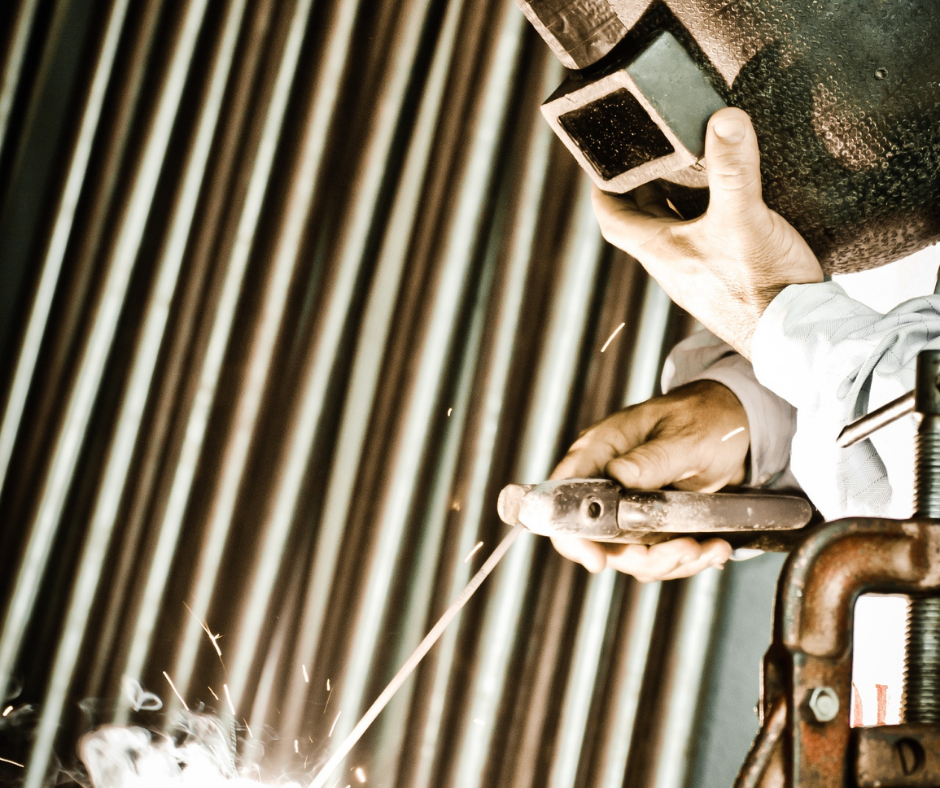Every good welder knows that their end product will only be as good as their welding tools and essential accessories. That’s probably why most amateur and professional welders are constantly on the hunt for high-quality and reliable tools and one of the most common online search queries tends to be: how to find welding supplies near me.
Top 10 Essential Welding Tools For Welders

Well, welders of all skill levels and niches, you need look no further. Here, we’re taking a closer look into the world of welding and reviewing 10 of the top welding supplies and welding accessories that no welder can (or should) have to live without. Whether you’re a weekend warrior or a professional welder, you should never dive into a job without the right tools by your side. Now, let’s get to welding.
What is Welding?
Before we dive into some of the top welding supplies and accessories, let’s start at the beginning. What exactly is welding? Welding can be understood as a fabrication process where two or more parts of metal are fused together via a specialized process of heat and pressure. The heat and pressure forms a join between the metal pieces as the parts cool. While welding is most commonly performed on metals and thermoplastics, welding can also be done on pieces of wood. When the welding joint is completed, this is called a weldment.
The parts that are joined are referred to as the “parent material.” The material that is then added to help form the joint, which is usually a pipe, filler wire, or consumable electrode (common in arc welding) is referred to as the “filler” or “consumable.”
How Does Welding Work?
Now that we have a clear definition of welding, how does this process work? Welding is a specialized process that involves high levels of heat and pressure to melt a portion of the base or parent material. Then a filler completes the joining process. When heat applies at such a high temperature (roughly 10,000 degrees Fahrenheit, which is like the temperature of the surface of the sun), this causes a weld pool of molten material that forms a join when it eventually cools. This new join is often stronger than the parent material itself. The use of pressure aids in the welding process depending on the type of weld.
Top 10 Essential Welding Tools That No Welder Can Live Without
- Welding Helmet: a good welding helmet is essential for any welding job. Also known as a welding hood, these heavy duty helmets protect your face, eyes, and neck from sparks and infrared or ultraviolet rays.
- Welding Jacket: Once your face is protected, follow suit with the rest of your body by investing in a high-quality welding jacket. The jackets are made with fire-resistant material that is designed specifically to protect welders from metal splatter and heat during the process.
- Welding Gloves: don’t forget about your hands, which of course, are closer to the welding machine than any other part of your body. Welding gloves are thick and made with fire-resistant materials to protect your hands. Popular options include TIG welding gloves or MIG and stick welding gloves.
- Safety Glasses: not every welding job will require the use of a complete welding helmet. Sometimes, specialized safety glasses will be enough to do the trick and protect your eyes from heat and sparks.
- Welding Scribe: precise measurements are essential for a successful weld. After all, if you mismark your weld, it’s pretty hard to go back and start over on the same piece of parent material. Welding is a permanent task, which is why marking tools and a scribe can be so useful in helping you know where to weld.
- Angle Grinder: a good grinding wheel can make all the difference in your welding job. An angle grinder cuts or polishes the metal and it also removes any excess materials or scraps. For a clean and polished finish, you’ll definitely need a high-quality grinding wheel.
- Welding Wire: to help you in joining the pieces of parent material, many welders will use welding wire. This specialized wire is actually a slim metal rod that can withstand high intensity heat. It then melts into the seam to complete the join.
- Welding Magnets: keeping your pieces of parent materials is essential when you get to work. Therefore so many professional welders use special welding magnets that effectively hold the pieces of metal securely. You can also utilize welding clamps for the same purpose.
- Hacksaw: if you don’t have a power saw handy, you can always go the old-fashioned route and use a hand hacksaw for the same purpose. A hacksaw can help you manually cut through pieces of metal, plastic, or wood.
- Steel Wire Brush: cleaning the parent material before and after a weld is important, which is why many welders use a steel wire brush.
Conclusion–Top 10 Welding Supplies and Welding Accessories That No Welder Can Live Without
Like any great art form or skill, your tools and equipment are incredibly important. Without the right welding supplies or welding accessories, you run the risk of ending up with a poor final product. This won’t meet yours (or your clients) expectations. Even worse, using low-quality welding accessories can cause a safety risk. Welding is a serious trade and without the proper supplies there they should not perform it.
That’s why we compiled this list of 10 of the top welding supplies and accessories. Any reliable welder will have a welding helmet, other safety wear, and the right welding machine for the job. Additionally, marking tools like a scribe and welding tools like an angle grinder can help you create significant projects. When it’s time to get to work, be sure you have the equipment you’ll need.





